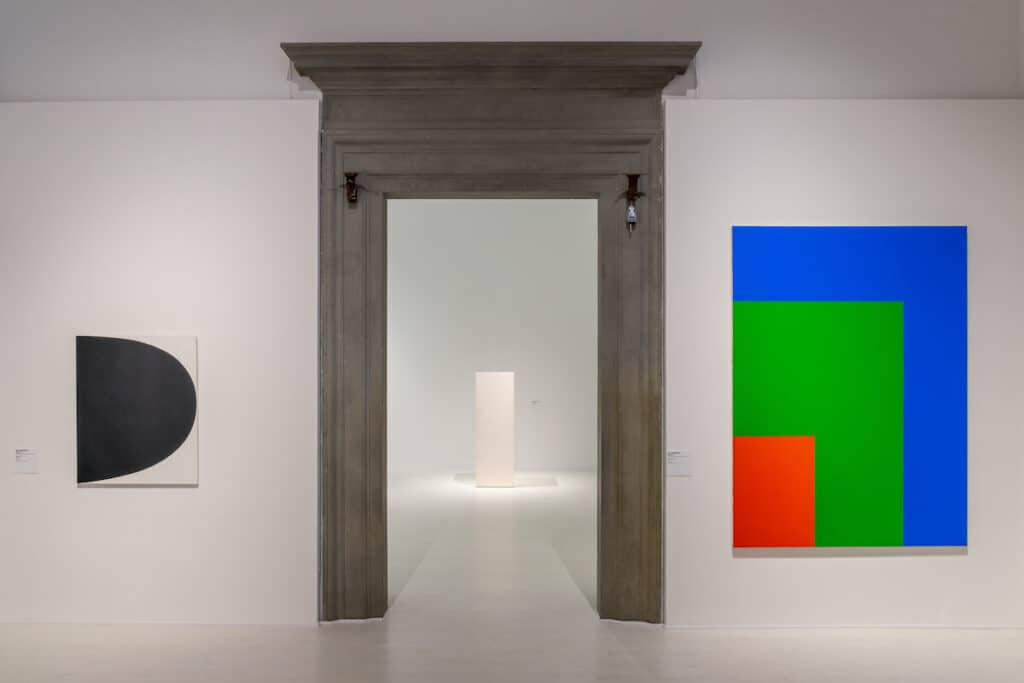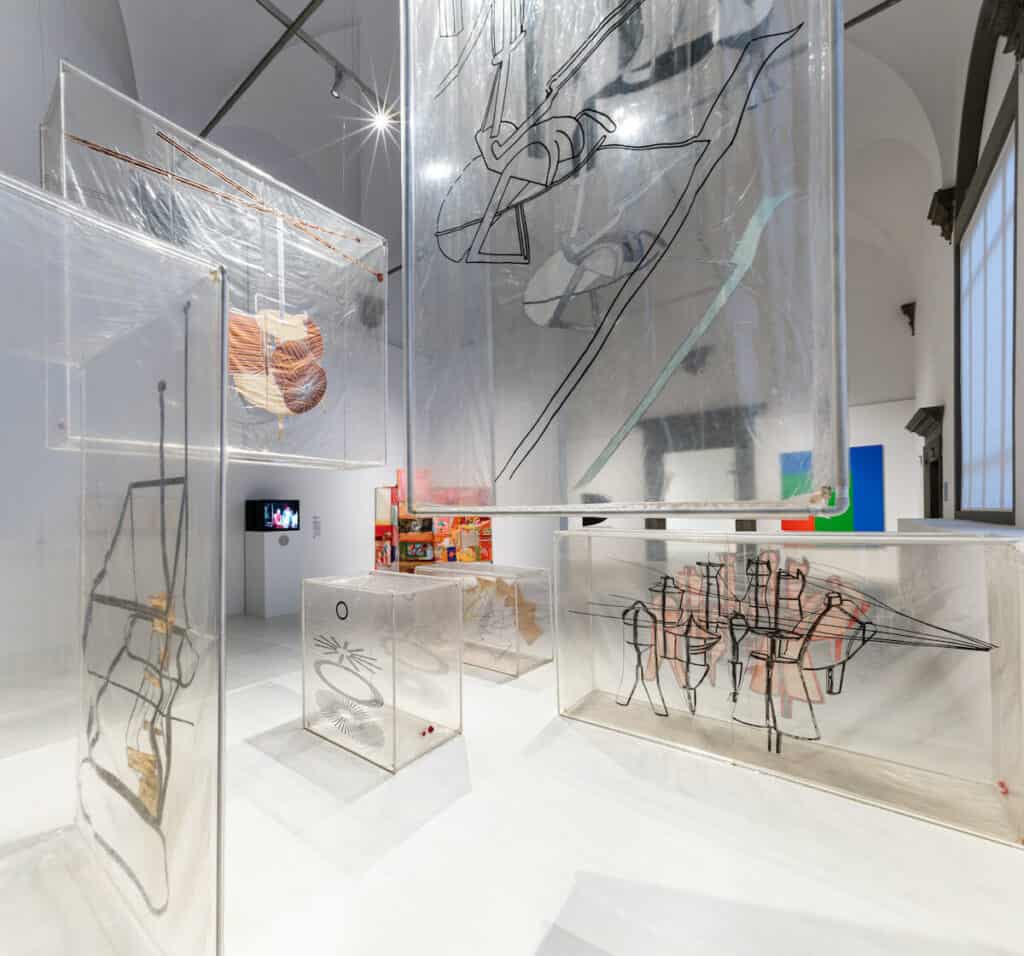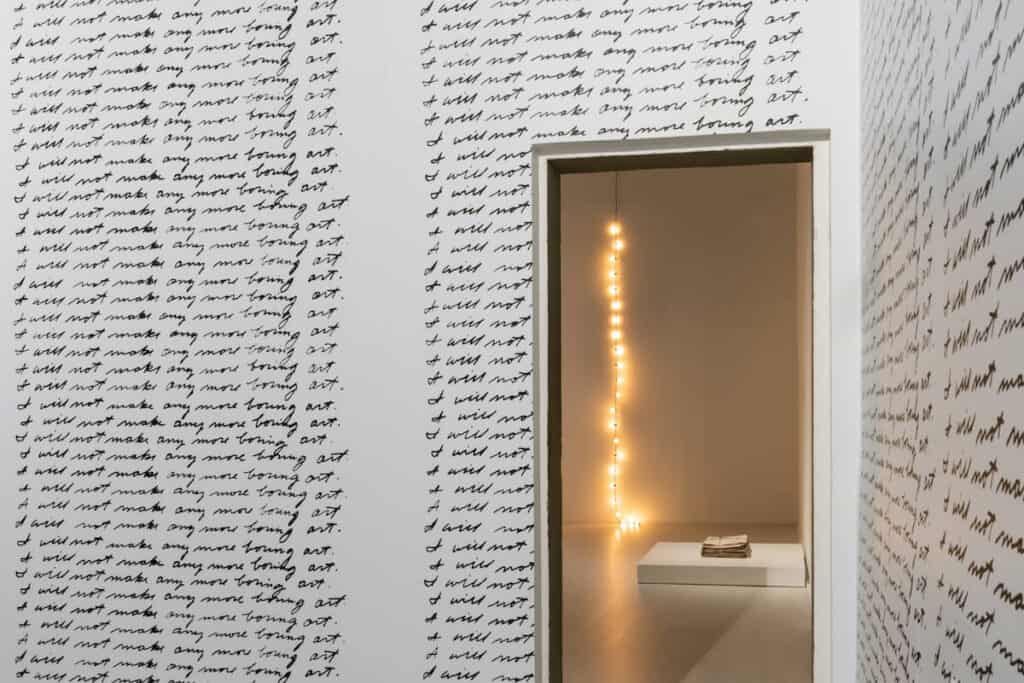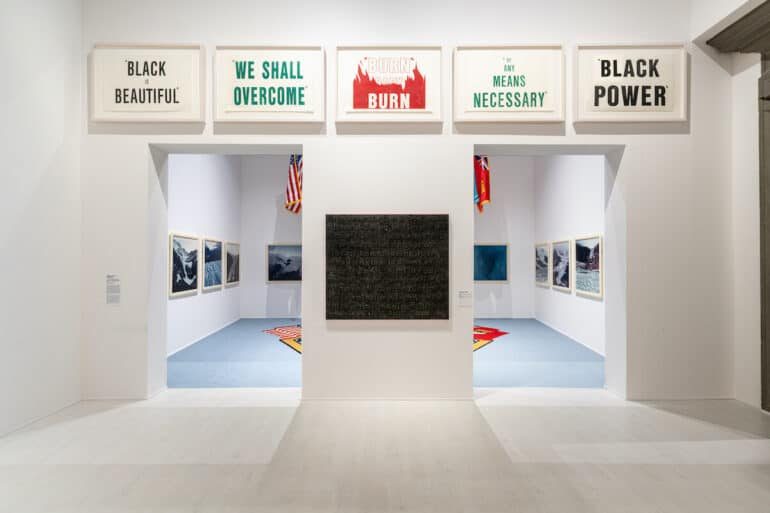An extraordinary journey through iconic art personalities at Palazzo Strozzi in Florence
A new exhibition titled “American Art, From Andy Warhol to Kara Walker”, has been unveiled at Palazzo Strozzi in Florence. Open until August 29, 2021, this new major exhibition celebrates modern art through over 80 works by American artists such as Andy Warhol, Roy Lichtenstein, John Cage, Bruce Nauman, Cindy Sherman, and more. Several of these artists are displaying their works for the first time in Italy, thanks to the collaboration with the Walker Art Center in Minneapolis, which houses one of the most unique museum collections in the United States and the world.
This new installation at Palazzo Strozzi offers the opportunity to take an extraordinary journey through iconic art personalities and their works, in a time ranging from the beginning of the Vietnam War in 1961 and the terroristic attack of 11 September 2001.
With a variety of artistic production ranging from painting and photography to video and sculpture, the visitor is invited to reinterpret forty years of American history and address issues such as consumerism, arts contamination, feminism, and civil rights. Some of the most talked-about works on display revolve around today’s key topics such as gender identity, racism, AIDS, and economic inequalities.

The time spanning from 1961 to 2001 defined the affirmation of the United States as a political superpower and marked an era of unprecedented experimentation for the arts of which America became a global reference point.
After such a challenging year like 2020, the exhibition aims at restarting the social and cultural life of Florence and Tuscany post Covid-19, attracting national and international visitors.
With “American Art, from Andy Warhol to Kara Walker,” Florence celebrates American artists while making art accessible in museums again and no longer only virtually.
Central in the exhibition is Andy Warhol, a leading figure in the movement known as Pop Art. Warhol and his Pop Art marked the beginning of a new era, challenging the imagery from popular and mass cultures, such as advertising and mass-produced objects, through the use of irony.

One of Warhol’s recurring themes to be found at Palazzo Strozzi is repetition, as his famous Brillo Boxes and Jackie Kennedy serial portraits show. The close-cropped image reproduces a moment shortly before President Kennedy was shot, and the replication of the picture, over and over again, puts the obsessive media coverage and public attraction with the tragic event into high relief. “Isn’t life a series of images that change as they repeat themselves?” Warhol wonders.
Roy Lichtenstein is another Pop Art’s key figure, whose unmistakable style you can admire at Palazzo Strozzi. In Particular, we recommend his “Look Mickey!” piece, where borrowing from a Donald Duck illustrated storybook, he merges comics with fine art while injecting his recognizable parody into the mix.
Another room that is worth visiting is the one dedicated to four icons of American art – Merce Cunningham, John Cage, Robert Rauschenberg and Jasper Johns. The space evokes some of the most important collaborations between these personalities who have revolutionized their respective fields of dance, music and visual art, giving life to a new interaction model between disciplines.
Bruce Nauman is also an artist who gets a special shout-out. The museum showcases one of his most celebrated video installations, Art Make-Up: No. 1 White, No. 2 Pink, No. 3 Green, No. 4 Black, which builds up from his famous quote, “If I am an artist and am inside a studio, whatever I do inside this studio is art.” In these four scenes, Nauman dips his fingers into paint and smears his face and body as if they were a canvas.

John Baldessari displays a selection of his works at Palazzo Strozzi too. His famous motto, “I will not make any more boring art” printed all over one of the rooms is very instagram-friendly. The print is based on an installation created at Nova Scotia College of Art and Design by Baldessari’s students.
The exhibition then has us reflecting on the artistic communities devastated by AIDS in the USA during the ’80s. This specific section expresses the horror, fear, anger, and pain associated with being gay in that difficult time and living with such a still stigmatized disease. Robert Mapplethorpe, Felix Gonzales-Torres, Robert Gober, Jenny Holzer, just to name a few, all have their works in this room.
Cindy Sherman and her use of appropriation are fascinating: in her photographic self-portraits, she depicts herself as various stereotyped female roles in films from the 1950s and 1960s who rejected patriarchal society. A common characteristic of her heroines is that they don’t follow conventional ideas of marriage and family; either they are rebellious women who struggle to conform.
Noteworthy for his references to Native American art is the work of Jimmi Durham, a longtime political activist of the American Indian Movement. Predominantly a sculptor, Durham combines found objects and natural materials and incorporates text to expose Western-centric views and prejudices hidden in language, objects, and institutions.

Glenn Ligon also focuses on giving a voice to marginalized communities through his art. Seeing skin color as a social construction, he painted the phrase “I do not always feel colored” repeatedly by rubbing an oil stick through a plastic stencil. This technique allowed for a remarkably subtle range of optical effects: the text became progressively smudged and illegible because of the greasy oil stick on the stencil. The transition from block-letter clarity to illegibility is a meaningful effect, serving as a metaphor for the interaction between black and white people in the construction of racial identity.
The exhibition then ends with Kara Walker, who explores race, gender, sexuality, violence, and identity in her work. Using cut-paper black silhouettes, she tells stories of rape, violence and oppression set in the cotton plantations before the Civil War. Walker reintreprets American history from themes such as slavery, physical and sexual violence, and oppression.
American Art: From Andy Warhol to Kara Walker
Until August 29
Palazzo Strozzi
Piazza degli Strozzi
Opening Hours
Mon-Fri 2.00pm-9.00pm
Sat-Sun and Holidays 10.00am-9.00pm
Entry fee
€15
Contact
prenotazioni@palazzostrozzi.org
+39 055 2645155
palazzostrozzi.org/en/









